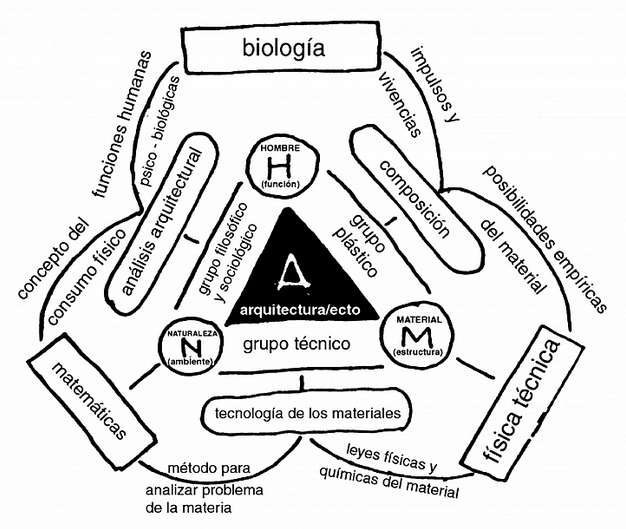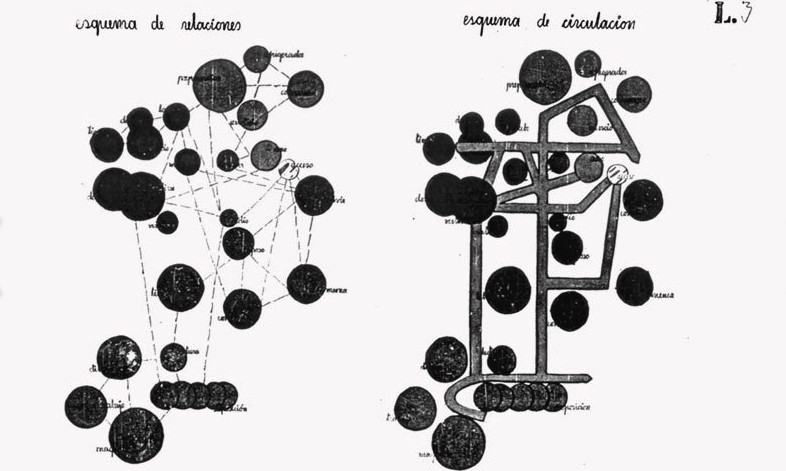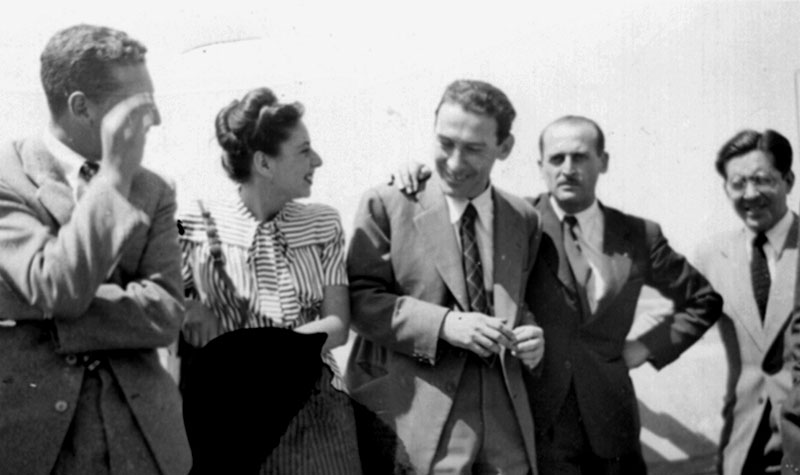In 1946, students at the Universidad de Chile’s school of architecture proposed a major curricular reform that remained in place until 1963. Student leaders were assisted by Hungarian architect Tibor Weiner who had been a postgraduate student at the Bauhaus while Hannes Meyer served as its director and who had worked as an architect in the Soviet Union from 1930 until 1933 when he moved to Switzerland, France and finally, in 1939, to Chile. The new study plan was a simplified version of Meyer’s Bauhaus study plan. Studies were organized in two cycles, analysis and synthesis, coinciding with the “Elemental Studio” (two years) and the “Core Studio” (three years). The final stage comprised a research seminar and the diploma (one year).
The classes were structured in four topic fields: techniques, plasticity, sociology, and philosophy. The overlaps with Meyer’s final Bauhaus curriculum of 1930 are obvious, but it should be noted that parts of this syllabus were never implemented since Meyer was dismissed from the Bauhaus that year. The parallels are at times due to subject-specific topics as in the classes of hygiene, sociology, or technology of materials, and there were additions like architecture history. The emblematic class of the reform was called architecture analysis that was originally taught by Weiner and included theory and design components. Analysis in this context meant scrutinizing an existing living environment or a site for a new project using a variety of methods for formulating an architectural problem such as written descriptions, architectural drawings, sketches, and scientific measurements.



